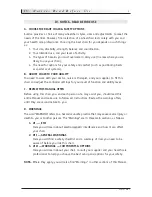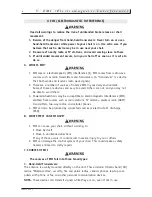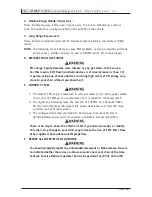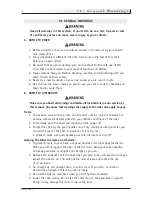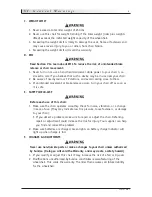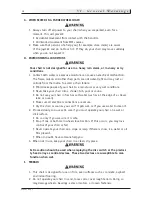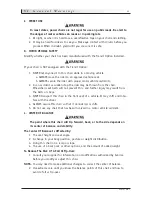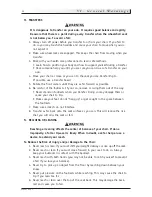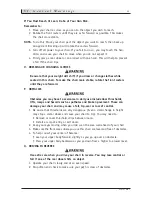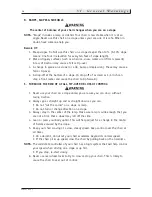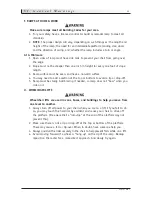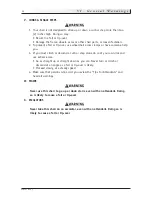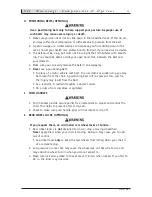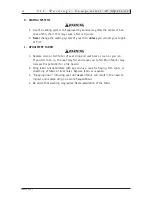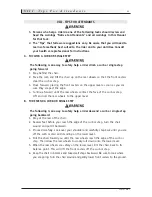
930547 Rev. C
V . E M I ( E l e c t r o m a g n e t i c I n t e r f e r e n c e )
7
2. Medium-Range Mobile Transceivers:
These include two-way radios used in police cars, fire trucks, ambulances and taxi
cabs. The antenna is usually mounted on the outside of the vehicle.
3. Long-Range Transceivers:
These include commercial radio and TV broadcast antenna towers and amateur (HAM)
radios.
NOTE–
The following are not likely to cause EMI problems: Lap-top computers (without
phone or fax), Cordless phones, TV sets or AM/FM radios, CD or tape players.
D. DISTANCE FROM THE SOURCE
EM energy rapidly becomes more intense as you get closer to the source.
For this reason, EMI from hand-held devices is of special concern. (See C.1)
A person using one of these devices can bring high levels of EM energy very
close to your chair without you knowing it.
E. IMMUNITY LEVEL
1. The level of EM energy is measured in volts per meter (V/m). Every power wheel-
chair can resist EMI up to a certain level. This is called its “immunity level”.
2. The higher the immunity level, the less the risk of EMI. It is believed that a
20 V/m immunity level will protect the power wheelchair user from the more
common sources of radio waves.
3. The configuration tested and found to be immune to at least 20 V/m is:
Quickie Xtender power assist mounted to a Quickie 2 manual wheelchair.
There is no way to know the effect on EMI if you add accessories or modify
this chair. Any change to your chair may increase the risk of EMI. Parts from
other suppliers have unknown EMI properties.
F. REPORT ALL SUSPECTED EMI INCIDENTS
You should promptly report any unintended movement or brake release. Be sure
to indicate whether there was a radio wave source near your chair at the time.
Contact: Sunrise Medical Customer Service Department at (800) 333-4000





